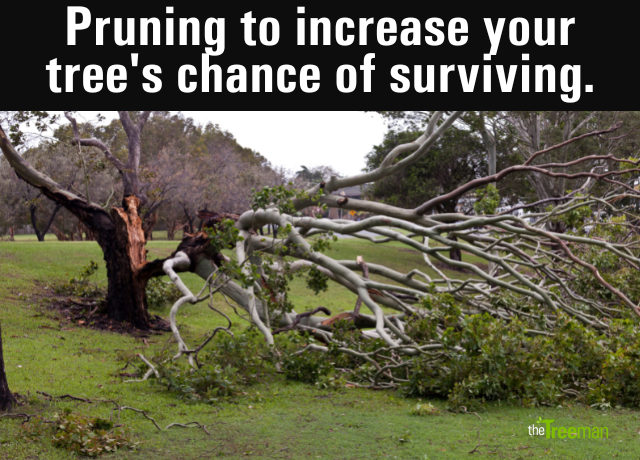
Tree pruning for surviving storms
Good tree pruning can greatly reduce the risks of trees suffering damage during wind gusts and storms.
A good visual assessment of trees will identify several things that may increase the chances of damage to property and potentially people in a storm including identification of:
Co-dominate stems which may be weak and can break easily under pressure.
Decay in limbs.
Overextended limbs.
Limbs that are already showing signs of overburdening.
Tight branch unions.
Deadwood.
Signs of dieback or that a tree is in decline.
Signs of a tree that has a compromised root system.
Evidence of fungal bracts.
Branches in powerlines
Some species of trees are more prone to breakages than others. The Liriodendron and Liquid Ambers are both susceptible to splitting and limb failure, as are Poplars and Ash trees.
Planting susceptible trees in sheltered areas or in groups with other trees for support could be useful if your space allows this. Trees have always used each other in storms for extra support, think about what happens in a forest and replicate this.
As with everything, being proactive in pruning your tree rather than reactive will always be the best option for your tree’s health and its future.
These include:
Removing deadwood that may tear into live wood as it breaks away.
Reducing weight on vulnerable limbs.
Pruning for a strong single leader when there is more than one.
Keeping the drip line free of compaction or raising the soil level.
Remove weak or crossing branches.
Ensure there is good balance on all sides of the tree.
Reduce bulk by thinning or reducing.
Ensure young trees are staked correctly and that ties are not rubbing the bark.
It just takes one massive gust in the wrong direction to result in potentially catastrophic damage to a tree that results in its complete decline, and it is possible it could have been avoided!